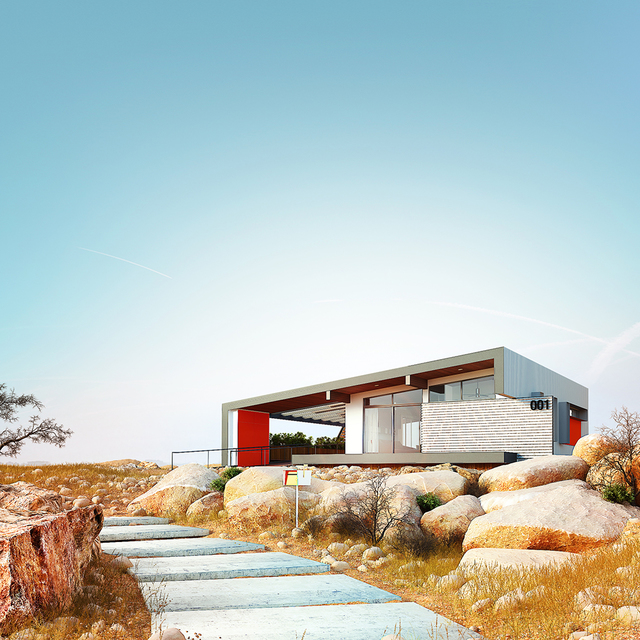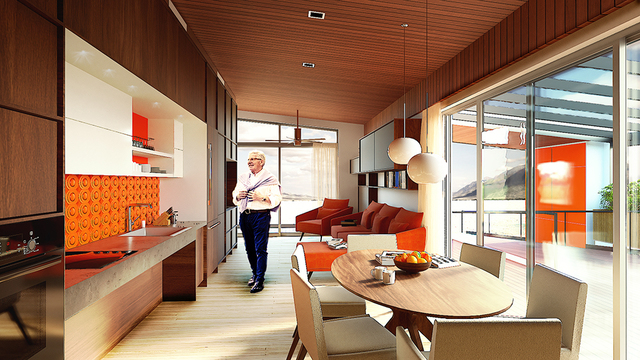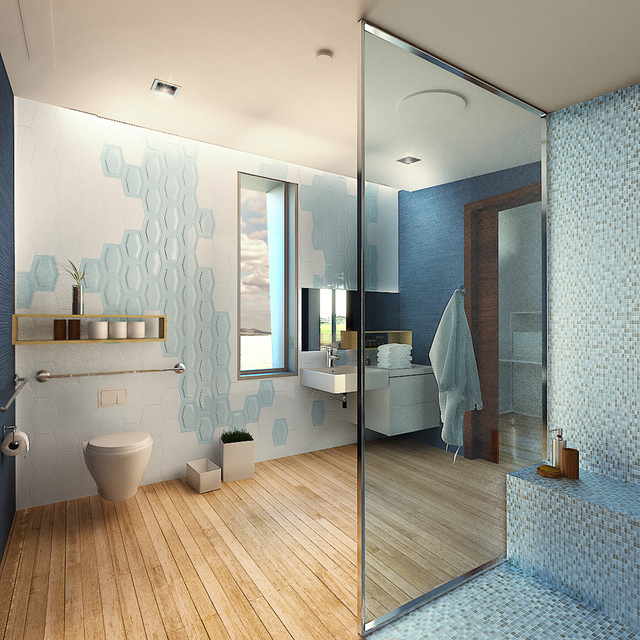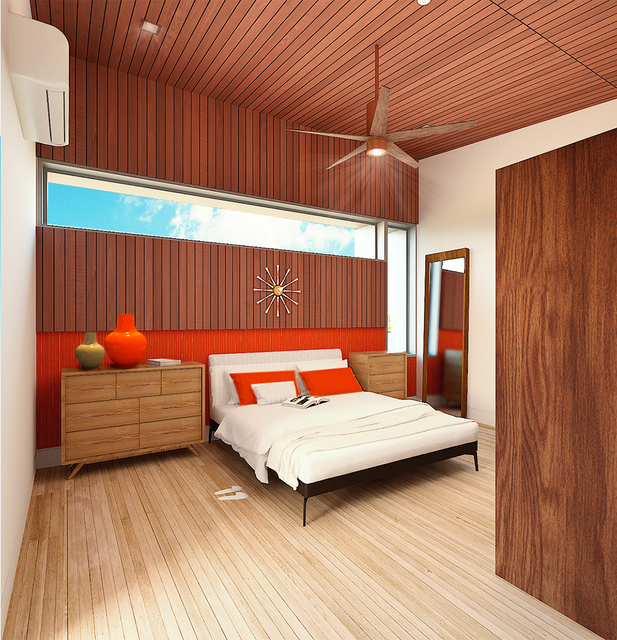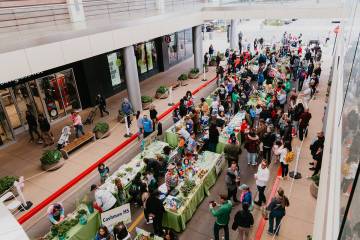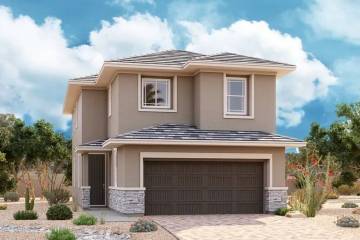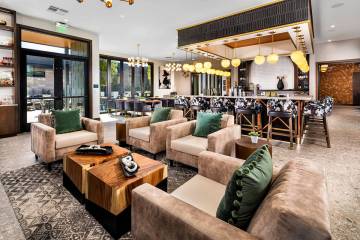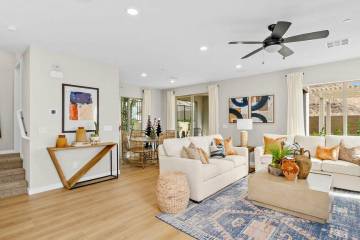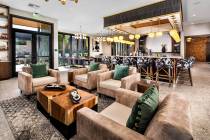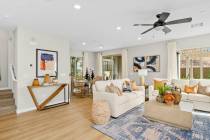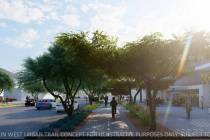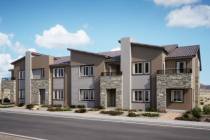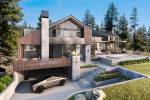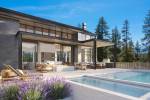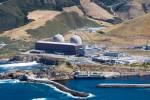UNLV Team Vegas designs house for Solar Decathlon 2017
University of Nevada Las Vegas students from the colleges of engineering, architecture, hotel management, health sciences, fine arts and construction management will be competing in Solar Decathlon 2017 at Denver this fall to showcase their skills in designing an energy-efficient, solar-powered home that can actively support aging residents.
The decathlon will include 10 events, for a total possible score of 1,000 points, that will challenge each team’s design and construction capabilities in architecture, engineering, communications, affordability, market appeal, comfort, hot-water usage, appliance efficiency, energy balance and innovation.
UNLV Team Las Vegas will be competing against 13 other student university teams, including UC Berkeley, UC Davis, Washington State, Northwestern, the University of Maryland and Ecole Polytechnique from Lausanne, Switzerland.
The group of 25 students has ambitious goals to integrate the 10 design and construction challenges into unified solutions for new problems that will affect the aging U.S. population.
Associate professor David James, director of solar and renewable energy programs at UNLV, was inspired by the book “Alone And Invisible No More” by Allan S. Teel, MD.
“How can a home adapt to your needs as you age and lose mobility, vision or cognition?” James asked. “Everyone has a story about family members. Our students made personal connections to the project. Our community partners loved the idea.”
U.S. health care studies estimate that in just three years, 45 percent of all U.S. households will contain at least one person 55 years or older, as average life expectancy continues to extend beyond age 80 for many Americans.
Over 20 percent of the population is expected to exceed age 65 by 2050, with about three-quarters of that population expected to require some form of long-term health care. As many as two out of five elderly retirees may also need nursing home assistance, at the same time as the number of younger caregivers available for this aging population continues to diminish.
Team Las Vegas is designing a compact, 990-square-foot home that focuses on achieving three primary goals for elderly residents.
The first goal is to provide an open, naturally illuminated interior design that adapts to the needs of persons who age in place. The layout of the home encourages residents to circulate between rooms and exercise by walking around, but the open floor plan also allows visibility through each of the rooms to provide an ease of recognition and orientation.
Storage, appliance and countertop spaces are adjustable for wheelchair access but also blend in with the walls to allow for more open areas within each room. An office workspace desk can convert into a fold-down bed for a family caregiver or health care professional when needed.
The second goal of the project is to provide maximum comfort through a net-zero energy performance design that includes radiant heating, energy recovery, ventilation and ductless air conditioning. The room temperature and lighting are intuitively controllable from a single console by just tapping a touchscreen or through a voice recognition hub like Amazon Alexa.
Automatic shading features installed around the house windows can track the sun through light sensors to provide abundant natural light but also minimize heat and glare during the summer.
Water-efficient appliances and plumbing consume just 48 gallons per day compared to an average of 72 gallons per day for a typical U.S. household. During the Solar Decathlon competition, the home will also be able to filter and recycle grey water to irrigate the drought-resistant plants and vegetation that make up the outside landscape.
The third goal is to create a responsive health care environment by equipping the structure with smart home devices that can facilitate communication between occupants, external family caregivers and health care professionals.
The compact interior of the 990-square-foot home includes a bedroom, bath, workspace, kitchen and living room area.
An integrated mechanical unit contains a solar-thermal radiant heating system with hydronic tubes mounted externally to the south side of the home that maximize heat transfer from the sun to a tubular array under the internal flooring all year round.
A sloping, horizontal rooftop overhangs the interior structure at the front of the south-facing home, as well as along its east and west sides. Pocket doors allow the interior kitchen and dining room to be extended outside to a front porch and side patio area, while the overhanging structure shelters residents from changing weather patterns.
Solar panels mounted on the rooftop provide 6.8 kilowatts of photovoltaic solar power to the home throughout the day when the sun is shining, and a 13.5-kilowatt-hour Tesla Powerwall 2 provides battery storage for supplemental electric power at night.
The habitat can operate off-grid, if needed, and continue to provide power to life-sustaining medical equipment, temperature control devices and lighting, even during a utility grid power outage.
For transportation, an electric car like the Nissan LEAF, Ford Focus EV or BMW i3 equipped with a 30-kilowatt-hour battery pack can be recharged by using electricity supplied from the photovoltaic solar panels and Powerwall storage battery.
Other innovations include a special phase-change material in the ceiling areas that can help passively mitigate temperature changes throughout the rooms. Three redundant mini split heat pumps, each with a SEER-33 rating, are supplemented by ceiling fans to provide air circulation and cooling during the summer.
HEPA carbon air filters and a custom energy recovery ventilation system help clean and recirculate the inside air to maintain good quality of health throughout the home.
UNLV Team Las Vegas is on a tight schedule to build and implement a finished project design.
Martin-Harris Construction has been an adviser, along with the Nevada Commission on Construction Education and the Southern Nevada Chapter of the International Code Council, which also provided funding for the project. Other major sponsors include Switch and the NV Energy Foundation.
UNLV Team Las Vegas is more than halfway toward its fundraising goal of $1 million to finance this year’s Solar Decathlon team of 25 students, but more donations are welcome.
During February, the building site near Paradise Road and Tropicana Avenue is being cleared and leveled. Framing of the structure and sub-floor will begin during March. April will see the installation of plumbing and electrical wiring, as well as the heating, ventilation and ductless air conditioning system.
Insulation, drywall and exterior cladding will be implemented during May, while interior finishing, appliance and furniture installation should be completed by the end of June.
During July and August, the new home will be commissioned and tested under extreme desert heat conditions, to see if it meets the energy-efficient and comfort goals that were conceived in the original design model.
The whole structure will be dismantled into sub-modules during September, then shipped to Denver and re-assembled at the site of the Solar Decathlon in time for the judging of the competition from Oct. 5-15.
For more information about the upcoming Solar Decathlon 2017 competition, visit the UNLV Team Las Vegas website, unlvsd.com.



